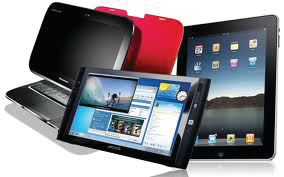Technology
An Evolution in CPE: Integrating the Tablet, Wi-Fi and the Cloud
Sep. 12, 2011

New learning model takes onsite CPE to the next level of engagement
Continuing Professional Education (CPE) is a required component of an accounting professional’s life, and today there is no shortage of online and onsite sessions available. Both types of CPE learning, face-to-face and web-based, provide attendees with valuable, timely information required to remain current in such areas as tax law, compliance, client data security, technology, and more. And while online sessions have gained momentum over the past few years based on convenience and affordability, the effectiveness of live onsite learning cannot be overstated.
The onsite learning model is a long-standing, tested and proven platform for interactive and rich exchange of information. Unlike online forums, onsite education provides participants with a level of energy and discussion that is difficult to reproduce in a web-based environment. And now, with the introduction of a new learning model that integrates electronic tablets, Wi-Fi and the Cloud into the education process, on-ground CPE is positioned to accelerate participant engagement to a whole new level.
Converging Technologies and the New Learning Model
The convergence of electronic tablets (such as Apple’s iPad), Wi-Fi and cloud computing have enabled the transformation of today’s onsite CPE delivery. Learners no longer need to be saddled with cumbersome manuals. Tablet-based learning eliminates the need for paper and pencils, allowing students and attendees to follow a presenter and participate in interactive exercises through a Wi-Fi-powered device. Annotation functionality allows attendees to takes notes directly on the tablet. This advanced new CPE model also supports electronic delivery of post-session resources. At the completion of a workshop, participants are emailed a link to the course materials, complete with personal notes. The entire learning experience is completely paperless.
Also consider the potential for heightened attendee engagement. Working interactively via a hand-held tablet eliminates the need for traditional PowerPoint presentations, which tend to only support one-way discussion — presenter to participants. Tablet learning opens up a world of opportunity to create a far more dynamic learning environment, such as by including polling questions and interactive charts and graphs within course sessions, similar to what we see in web-based events today.
In comparison, consider the following example of a traditional CPE workshop experience:
An accounting professional attends a typical CPE-based seminar or conference. Chances are high that the presenter facilitates the session using a standard PowerPoint presentation and supplies attendees with paper copies of slides and manuals. Notes are taken manually, and all paper copies are transported back to the practitioner’s office and filed among volumes of other paper, likely to not be viewed again.
This scenario should sound familiar. In fact, it’s too familiar for many accounting professionals, which is why so many have turned to online CPE modules. With the new model firmly in place, tides may turn again, enticing professionals to attend onsite events over web-based sessions. Tablet-based learning takes onsite courses to a new level, pairing the synergy onsite forums innately offer with advanced technology for learning that is fun, engaging and two-way.
The immense value of the new onsite learning model will become more apparent as more practitioners take part in these advanced learning forums.
Consider the following benefits:
- Eliminates the need for paper manuals and copies of presentations.
- Provides attendees with convenient electronic versions of annotated course materials for easy retrieval and review.
- Enables two-way, interactive dialogue during sessions via such features as polling questions.
- Offers course materials within a high definition display, supporting vivid, multi-color collateral (also eliminates the high cost of printing color materials).
- Eliminates capacity restrictions. Presenters can download as much material as needed to tablets.
- Provides advanced functionality to customize the attendee experience. Tablets enable learners to zoom in or out, create bookmarks and links to information, quickly conduct searches for specific information, and take notes using intuitive annotation tools.
For course developers and presenters, this new model eliminates the reliance on paper, while also opening the door to many updated features such as easy implementation of video, audio and web content. It also expands the shelf life of course materials, allowing real-time updates to materials when needed. For participants, the combination of interactive tools and resources and two-way interaction promises a much richer and engaging learning experience. The new era of onsite CPE learning has begun!
About the Author
John Higgins, CPA.CITP, is a strategic advisor for CPA Crossings, LLC — a leading technology solutions consulting firm that offers a comprehensive catalog of CPE topics for state CPA society members and the broad accounting profession. John is also a regular contributor to CPA Practice Advisor. For more information on the tablet-based CPE learning model, contact John via email.
